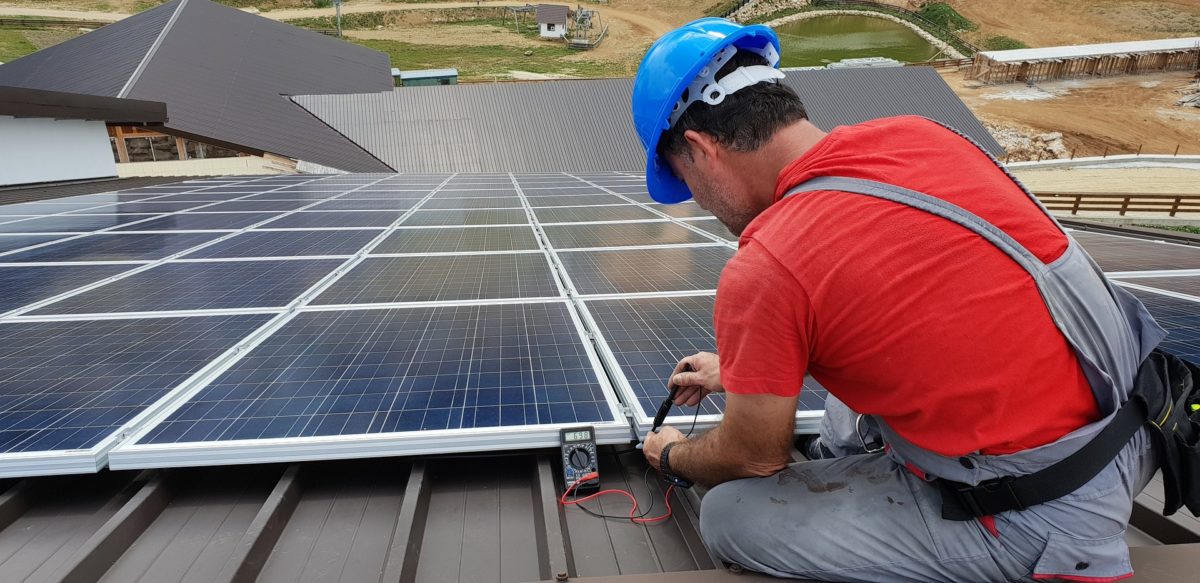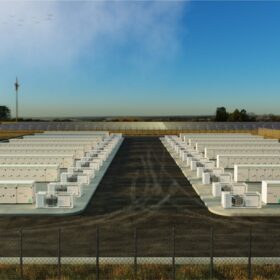Industry experts predict that over the next five years, the solar industry will grow 5x larger than it is today, likely reaching a capacity of 700 GW by 2033. However, only 255,500 Americans work in the solar industry. And the Interstate Renewable Energy Council (IREC) reports that 89% of solar firms struggle to find qualified applicants to fill positions. The solar workforce will need to more than double in the next 10 years to reach the federal goal of 100% carbon-free electricity by 2035.
To meet this demand, the utility industry must maximize its current workforce for solar deployment and maintenance and open its doors to new talent in a way that is simple, accessible, and financially viable. Providing technology that fits the unique needs of the solar industry, and makes jobs easier for utility workers, is essential to attract new talent.
With the right mobile technology, any utility worker — from a new hire to a seasoned pro — can communicate with their team, troubleshoot and repair infrastructure, and work in any environment to drive growth and meet customer demands.
Remote computing technology
Utility workers and contractors in the solar industry perform tasks in challenging environments every day. Whether adding solar panels to a residential roof or creating a solar farm in a remote location, these workers must do their jobs in varying conditions and situations.
For residential solar projects, utility workers and contractors must assess the home and roof, collect and track permits and documentation, order equipment, install panels, and test system performance before final deployment.
When up on a roof checking for structure requirements or installing panels, utility workers and contractors need a technology solution that can quickly pull up blueprints, contracts or heavy-intensive graphics such as geographic information systems (GIS) or CAD drawings that require advanced GPU and CPU integration. They can’t risk their computing device being unusable when in sunlight, dropped or dirtied. They also don’t have time to remove industrial-grade leather safety gloves to use the touchscreen or stylus or wait for a document or image to load.
When servicing utility-scale solar, workers often find themselves in remote locations with limited connectivity. The average solar farm is over 40 acres (about twice the area of Chicago’s Millennium Park). From one end of the farm to the other, workers need uninterrupted access to critical information and a means of communicating with their team.
Without the right technology, they could find themselves in the middle of the solar farm, unable to view the latest reports or contact another team member about an intricate servicing question. These types of challenges waste time and with a limited workforce, time is already in short supply.
Consider also that utility workers often travel to several different job sites every day — pushing their computing solutions to the max. This means they don’t have time to sit at a desk to charge their devices, review essential documents, or check on how well a recent deployment is running. They must access specialized software and relevant documents in seconds. Technology that grants easy access to information from a utility truck, office, field, or rooftop means workers meet deadlines, order the right parts the first time, and leave a job site confident that the infrastructure will perform as expected.
Ruggedized computing
Consumer-grade technology rarely meets the unique challenges faced by a utility worker in the solar industry. These devices can work fine for personal use and traditional office work. But, for workers in harsh and unpredictable environments, consumer-grade devices seldom get the job done. Imagine sitting at your desk with your laptop.
Now you must take your laptop and drive to a field a few hours away from the closest major city. You’re now in the middle of a field and having trouble viewing the consumer-grade device screen in the sunlight. The hotspot on your phone isn’t working, the device applications are hard to use, and the battery needs to be recharged. Your laptop is overheating, unable to connect to the internet, and you’ve now lost valuable time in your day to get your work done. That’s what it’s like for a utility worker without ruggedized technology solutions.
Rugged solutions provide more than just a sturdy exterior or hard-shell casing. They offer uncompromised connectivity, adaptability with various ports and keyboards, optimized heat management, hot-swappable batteries, and advanced processing power when working in a mobile office environment.
With ruggedized technology, utility workers and contractors can track, monitor, and maintain solar projects from the office and the field. Investing in necessary mobile technology solutions not only gives today’s limited workforce the tools they need to work with speed and efficiency, but it also prepares the industry for what lies ahead: a technology-centered energy infrastructure that depends on workers who can stay constantly connected, adaptable and ready to engage whenever and wherever.
Chad Hall is the strategic account manager of Enterprise Mobility Solutions, Panasonic Connect North America.
The views and opinions expressed in this article are the author’s own, and do not necessarily reflect those held by pv magazine.
This content is protected by copyright and may not be reused. If you want to cooperate with us and would like to reuse some of our content, please contact: editors@pv-magazine.com.








By submitting this form you agree to pv magazine using your data for the purposes of publishing your comment.
Your personal data will only be disclosed or otherwise transmitted to third parties for the purposes of spam filtering or if this is necessary for technical maintenance of the website. Any other transfer to third parties will not take place unless this is justified on the basis of applicable data protection regulations or if pv magazine is legally obliged to do so.
You may revoke this consent at any time with effect for the future, in which case your personal data will be deleted immediately. Otherwise, your data will be deleted if pv magazine has processed your request or the purpose of data storage is fulfilled.
Further information on data privacy can be found in our Data Protection Policy.